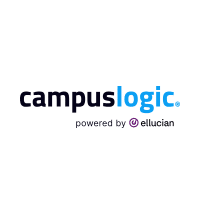
The Future of Software
2024 Report
Greater Phoenix has emerged as one of the nation’s fastest-growing technology hubs, driven in no small part by a robust software and IT sector with a rich history of customer success operations, corporate software divisions and software as a service companies.
96,000+
Employees
18%
Job Growth Over Past 5 Years
$1.1B+
VC Funding in 2023
Building on growing technological momentum, the region offers a pro-business climate — characterized by low operating costs and a supportive regulatory landscape — that provides a stable foundation for growth, while top-notch lifestyle amenities contribute to an attractive quality of life. Additionally, a strong workforce pipeline ensures a steady flow of skilled professionals, while Greater Phoenix’s strategic proximity to key western states allows for convenient travel to the Bay Area and other major tech markets without the high costs of operating there. All this is evidenced by the large and growing roster of high-quality software companies that have chosen to call Greater Phoenix home, including:
However, the software industry is fiercely competitive, and Greater Phoenix faces significant challenges from four major tech markets: Austin, Dallas, Denver and Salt Lake City. To maintain its competitive edge and position itself as a leader in the software-dependent industries of the future — such as AI, cybersecurity, edtech, fintech and digital health — Greater Phoenix must ensure the continued development of its software industry through success in two critical endeavors:
Enhanced attraction and retention of top technical talent
Cultivation of a more vibrant capital ecosystem
In September 2024, the Greater Phoenix Economic Council convened regional software leaders to explore future opportunities in the sector, drawing invaluable insights from these discussions. Building on these perspectives, this report outlines the opportunities in Greater Phoenix and offers a series of proposals aimed at driving software sector growth, ensuring the region continues to thrive and capitalize on emerging opportunities in the technology landscape.
Tech Talent Trends
Trends in Tech Occupations by Metro
| 2023 | 2018-2023 | ||||||
|---|---|---|---|---|---|---|---|
| Metro | Population | Tech Job Concentration | Tech Jobs | % Job Growth | Job Growth | Expected Change | Competitive Effect |
| Phoenix | 5,056,714 | 1.13 | 96,260 | 17.8% | 14,549 | 12,988 | 1,561 |
| Austin | 2,492,116 | 1.96 | 90,468 | 43.2% | 27,305 | 10,040 | 17,265 |
| Dallas | 8,092,204 | 1.44 | 211,290 | 34.2% | 53,865 | 25,022 | 28,842 |
| Denver | 2,996,426 | 1.58 | 94,313 | 13.7% | 11,336 | 13,189 | (1,852) |
| Salt Lake City | 1,275,975 | 1.37 | 41,758 | 26.6% | 8,784 | 5,241 | 3,543 |
Source: Lightcast 2024 Q3
The preceding table shows that Greater Phoenix has the second-largest tech employment base among the five southwestern metros (96,260 jobs), a tech talent concentration above the national average (1.13 vs 1.00) and double-digit tech job growth over the past five years (17.8%).
However, the impressive tech job concentrations of Austin and Denver allow these metros to nearly match Greater Phoenix in total tech jobs despite the region being more populous. Additionally, from 2018 to 2023, Salt Lake City, Dallas, and especially Austin experienced significantly faster growth in tech employment than Greater Phoenix, though the market still outpaced Denver.
The significance of these growth rates can be better assessed by examining the “Expected Change” figures, which represent the portion of 2018-2023 job growth due to prevailing national and industry trends, in conjunction with the “Competitive Effect” figures, which capture the portion of job growth driven by a metro’s unique competitive offerings. Greater Phoenix had a modest positive competitive effect, meaning the region somewhat overperformed based on what we would expect from overall market trends. In contrast, Denver’s competitive effect was negative, likely due in part to rising costs of living. However, Salt Lake City, Austin and Dallas experienced substantial competitive effects, with Austin and Dallas boasting five-figure job growth from their competitive effects alone.
Despite Greater Phoenix having a healthy and growing tech employment base, the competition is stiff. To advance competitive standing, the market must bolster technical talent through enhanced attraction and retention efforts.
Capital Ecosystem
While talent is essential for enabling companies to operate and scale effectively, there is a second major driver of a thriving software sector: the capital ecosystem. One useful metric for gauging the overall health of a capital ecosystem is venture capital (VC) per capita. In 2023, Arizona ranked 22nd, Texas 15th, Utah 10th and Colorado sixth nationally in VC per capita[1], indicating stronger VC activity in competitor states. For a more precise assessment, the table below provides VC activity data at the metro level.
[1] Pitchbook
VC Activity by Metro in 2023
Metro |
Population |
VC Deals |
VC Funding |
VC Per Capita |
Phoenix |
5,056,714 |
99 |
$1,176,740,000 |
$232.71 |
Austin |
2,492,116 |
390 |
$3,458,350,000 |
$1,387.72 |
Dallas |
8,092,204 |
169 |
$1,004,330,000 |
$124.11 |
Denver |
2,996,426 |
230 |
$2,545,720,000 |
$849.59 |
Salt Lake City |
1,275,975 |
75 |
$413,270,000 |
$323.89 |
Source: Lightcast 2024 Q3; Pitchbook
In 2023, Greater Phoenix had more VC deals and funding than Salt Lake City and higher VC per capita and funding than Dallas. But it is evident by any metric that the capital ecosystems of Denver and especially Austin, each with VC per capita several times that of the other metros, lead the pack by a wide margin. If Greater Phoenix is to remain competitive long term it must accelerate the development of its capital ecosystem.
Strategies Driving Future Success
Elevating the Greater Phoenix Software Ecosystem
To enhance its competitiveness in attracting and retaining tech talent, Greater Phoenix should implement comprehensive initiatives that strengthen existing economic development tools and introduce new policies to bolster the region’s STEM workforce. In parallel, Greater Phoenix could encourage new business formation and cultivate a more dynamic capital ecosystem through targeted economic development programs. A Phoenix angel investor network initiative would connect entrepreneurs with local angel investors and build on the existing Angel Tax Credit program with a matching fund to incentivize early-stage investments and expand the region’s investor network. An innovation district initiative would establish districts where startups, tech companies, VC firms, and academic institutions benefit from targeted incentives—such as startup funding, tax credits, and expedited permits—aimed at creating clusters of innovation, accelerating business growth, and driving a vibrant capital ecosystem.
Tying these efforts together, a strategic marketing campaign would position Greater Phoenix as a destination for tech pioneers by promoting its blend of cutting-edge technology opportunities, a thriving entrepreneurial community, and exceptional quality of life—attracting experienced talent and ambitious entrepreneurs ready for their next big move.

Conclusion
Greater Phoenix is at a critical juncture in its evolution as a technology hub. The region has experienced impressive growth but competition from other tech markets like Austin, Dallas, Denver and Salt Lake City remains strong. To maintain its edge, Greater Phoenix must focus on attracting and retaining top software talent while strengthening its capital ecosystem.
Advancing proposals such as the tech talent relocation and recruitment programs and the angel investor network engagement initiative will be critical in bolstering Greater Phoenix’s standing as a destination of choice for experienced professionals and innovative entrepreneurs. By leveraging these strategies and promoting its unique advantages, the region can continue to grow its software sector and secure its place at the forefront of the emerging technology landscape.
Download the PDF on the Future of Software in Greater Phoenix.
Industry Expert
Mark Paratore
Vice President, Business Development
Published: 10/28/2024













